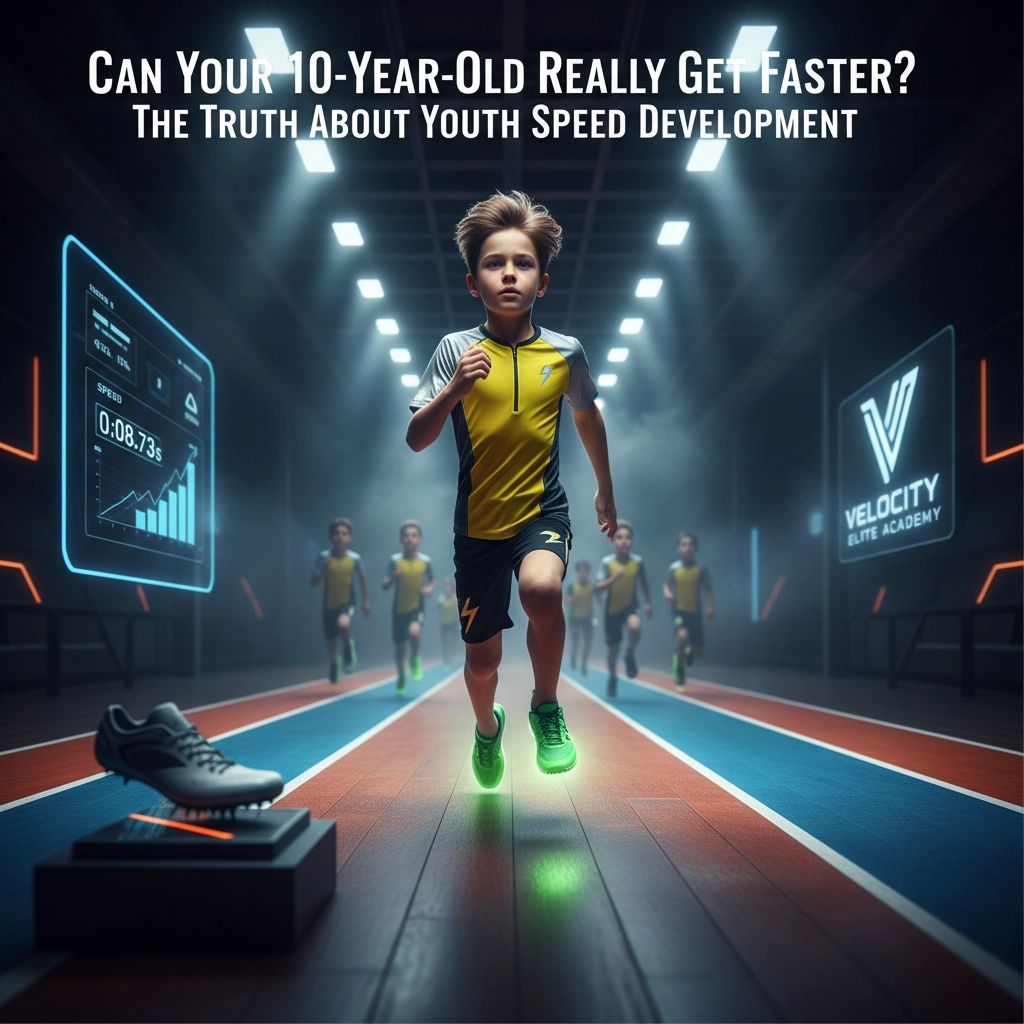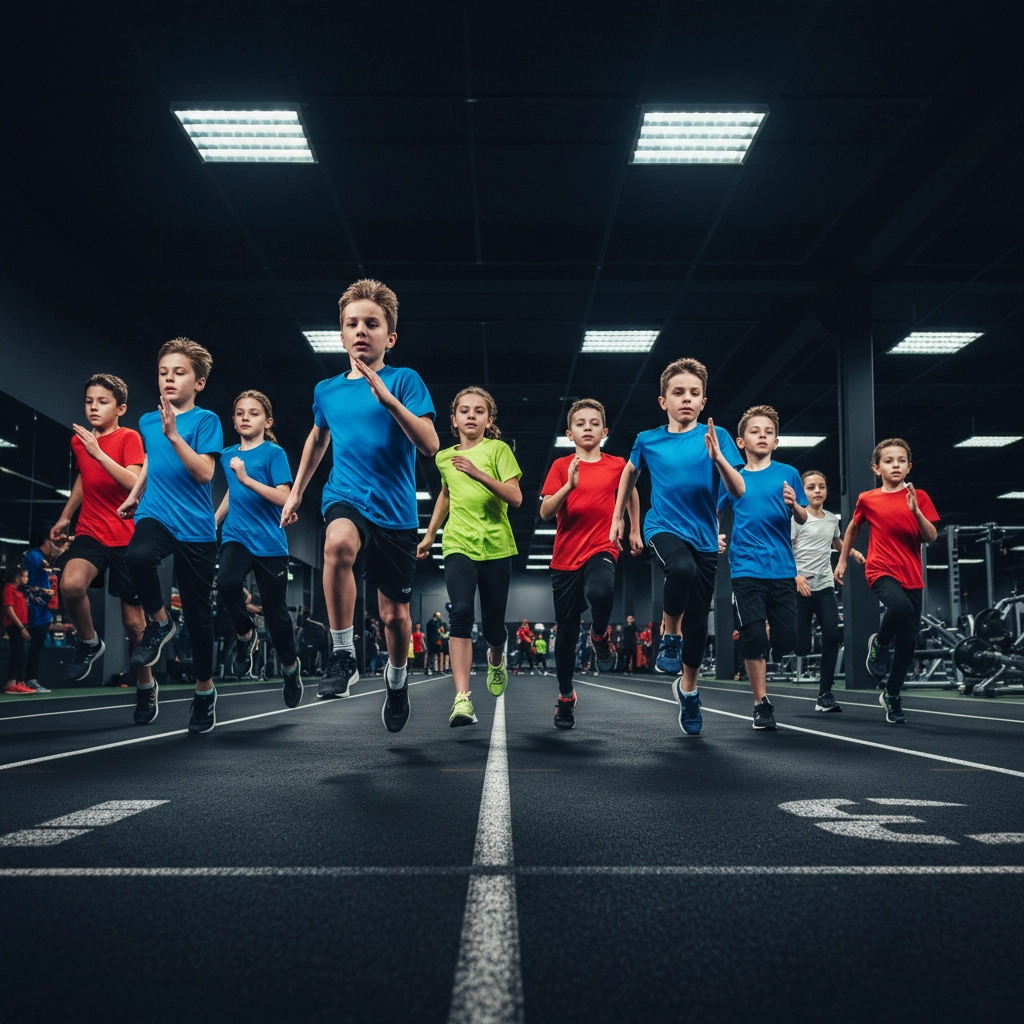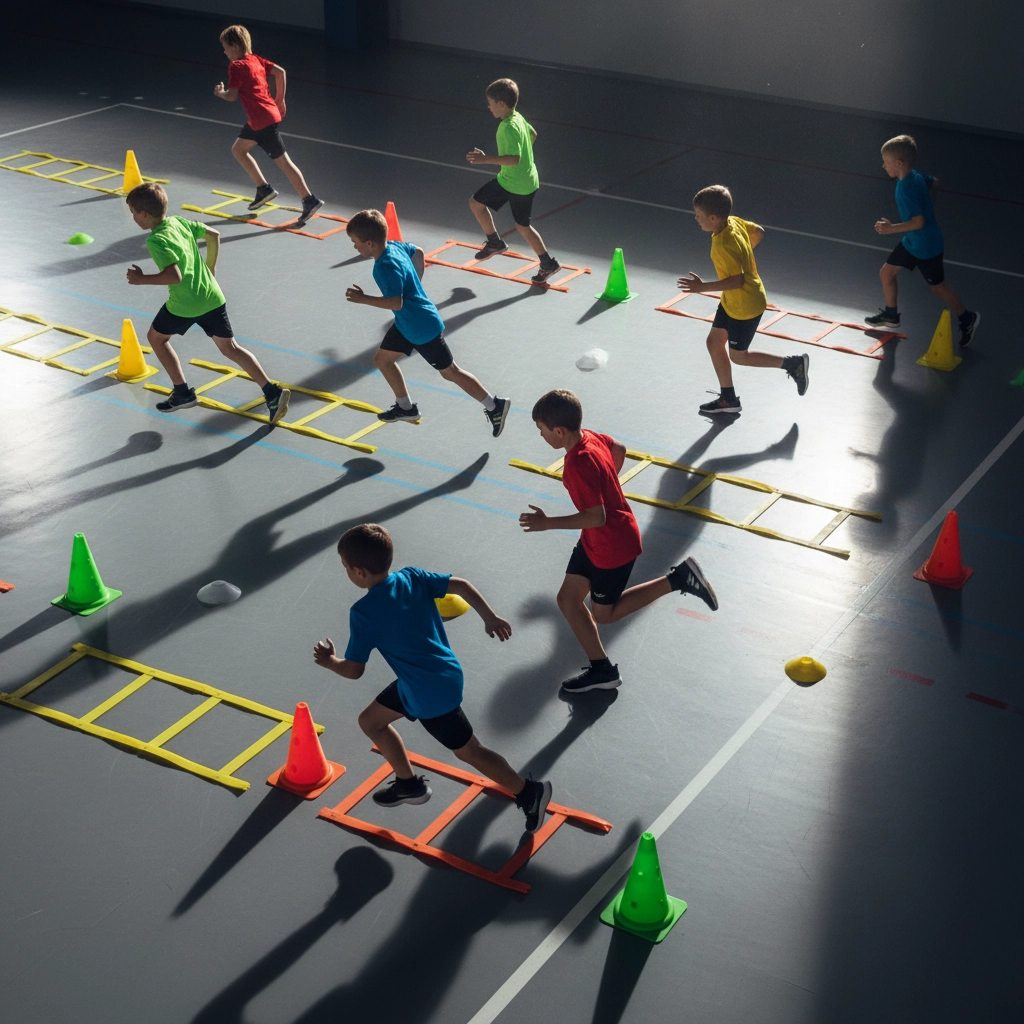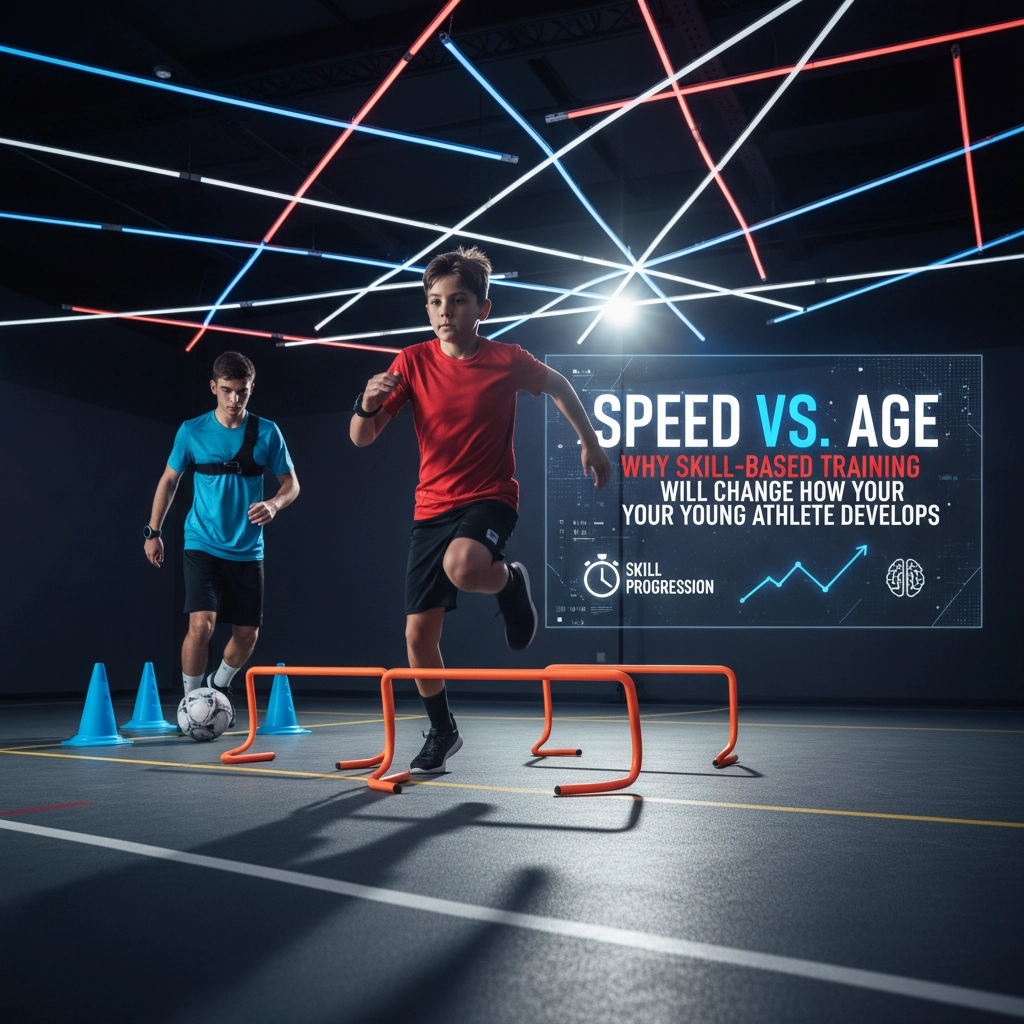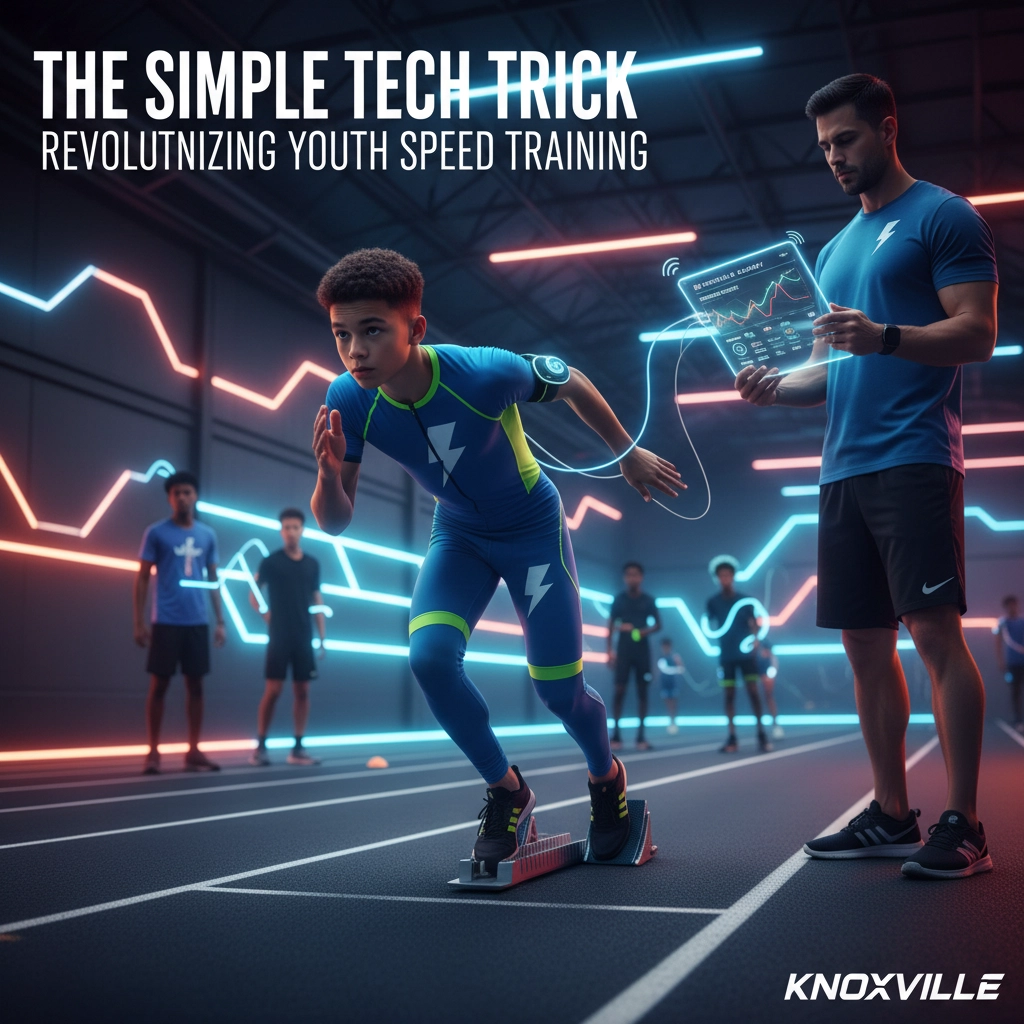"Will my kid ever be fast enough to make the team?" It's the question we hear from parents all the time here in Knoxville. Maybe your 10-year-old loves soccer but seems to always be a step behind. Or they're passionate about basketball but struggle to beat defenders down the court. Here's the truth: yes, your 10-year-old can absolutely get faster: but the how and how much depends on understanding what actually drives speed development at this age.
Let's cut through the myths and get to the real science behind youth speed training.
The Genetics Question Everyone's Asking
First, let's address the elephant in the room. Is speed just something kids are born with?
The research shows speed is approximately 70% genetic. That means genetics influence things like muscle fiber types, body composition, and how quickly your child can produce force. But here's what gets overlooked: that still leaves 30% that can be improved through proper training and development.
Think of genetics as setting the ceiling, not the floor. Some kids might have a higher ceiling than others, but every child can make meaningful improvements from wherever they're starting. We've seen this countless times with young athletes who come through our doors at Athletic Republic Knoxville feeling discouraged, only to surprise themselves (and their parents) with how much faster they can get.
Why Age 10 Is Actually Perfect for Speed Development
Here's something that might surprise you: 10-year-olds are actually in one of the best positions to make speed improvements. Before puberty, children's gains in explosive activities like sprinting come primarily from improved motor coordination, not raw strength. This is huge.
Your child's nervous system is incredibly adaptable right now. They're primed to learn new movement patterns, develop better body control, and refine their running mechanics. Plus, they're growing naturally, which means consistent training combined with that natural growth creates ideal conditions for speed development.
At this age, we often see rapid initial gains in the first few months of proper speed training. It's not uncommon for young athletes to shave noticeable time off their sprint times just by learning how to run more efficiently.
What Actually Makes 10-Year-Olds Faster (It's Not What You Think)
If you're picturing your kid grinding through heavy weight training or running endless laps, stop right there. Effective speed training for 10-year-olds looks completely different from what older athletes do.
Movement Quality Wins Over Intensity
The foundation is proper sprint mechanics: things like keeping eyes forward, bending arms at 90 degrees, lifting knees high, and landing on the balls of their feet. We teach these patterns through fun, engaging drills rather than boring repetition.
Focus on the Fundamentals
Age-appropriate drills that work include:
- Sprint starts over 10-20 yards
- Ladder drills for foot speed and coordination
- Cone drills for agility and direction changes
- Mini hurdles for proper knee drive
- Super Running Treadmill bouts forcing proper mechanics
The key is short bursts of high-intensity movement. More running doesn't automatically mean faster athletes: in fact, too much endurance work can actually slow kids down by training their muscles for sustained effort rather than explosive power.
Consistency Beats Volume Every Time
Here's a game-changer for busy parents: 2-3 training sessions per week produces real results. You don't need to live at the gym. What matters is showing up consistently and focusing on quality movement patterns.
Setting Realistic Expectations (The Good News)
Let's talk about what improvement actually looks like. Speed gains follow a pattern: initial improvements often come relatively quickly in the first few months, then progress slows as athletes get closer to their genetic potential. This is normal and expected.
One research example shows a 15-year-old soccer player improving her 10-meter fly time from 16.6 MPH to 18.3 MPH over four months of consistent twice-weekly training. That's solid progress achieved through patient, consistent work: not overnight miracles.
For 10-year-olds, improvements might show up as:
- Getting to the soccer ball first more often
- Breaking away from defenders in basketball
- Beating out infield hits in baseball
- Simply feeling more confident and explosive in their movements
Track progress every few months rather than weekly. Week-to-week variations are normal, but the long-term trend is what matters.
The Athletic Republic Advantage
At Athletic Republic Knoxville, we understand that 10-year-olds aren't just small adults. Our youth programs are specifically designed around how young athletes actually develop speed.
We focus on making training engaging and age-appropriate while building the movement foundations that will serve your child for years to come. Whether they're into basketball, soccer, baseball, or any other sport, we meet them where they are and help them reach their potential.
Common Myths That Hold Kids Back
Myth #1: "They're too young for speed training"
Truth: Age 10 is actually ideal for developing the coordination and mechanics that form the foundation of speed.
Myth #2: "Just run more to get faster"
Truth: Speed is built through short, explosive efforts and proper mechanics, not endless jogging.
Myth #3: "If they're not naturally fast now, they never will be"
Truth: Proper training can help any child make meaningful speed improvements, regardless of their starting point.
Myth #4: "Speed training is dangerous for kids"
Truth: Age-appropriate speed training actually builds coordination, improves body control, and reduces injury risk when done correctly.
What Parents Can Do Right Now
While professional training makes a huge difference, there are things you can support at home:
- Encourage your child to play multiple sports to develop different movement patterns
- Focus on fun rather than pressure: speed development works best when kids enjoy the process
- Be patient with the process: meaningful change takes time
- Celebrate effort and improvement, not just results
Remember, the goal isn't to create the next Olympic sprinter overnight. It's to help your child develop confidence, athleticism, and a love for movement that will benefit them for life.
The Bottom Line
Your 10-year-old can absolutely get faster. The combination of their adaptable nervous system, natural growth, and proper training creates an ideal window for speed development. Focus on technique over intensity, keep it fun and age-appropriate, and trust the process.
Speed isn't just about genetics: it's a skill that can be developed with the right approach. And at 10 years old, your child is in the perfect position to start building that skill.
Ready to see what your young athlete can achieve? We'd love to show you how our youth training programs can help your child reach their speed potential. Set up your free trial workout and let's get started on unlocking their athletic future.
The question isn't whether your 10-year-old can get faster: it's how much faster they can get with the right training and support.
